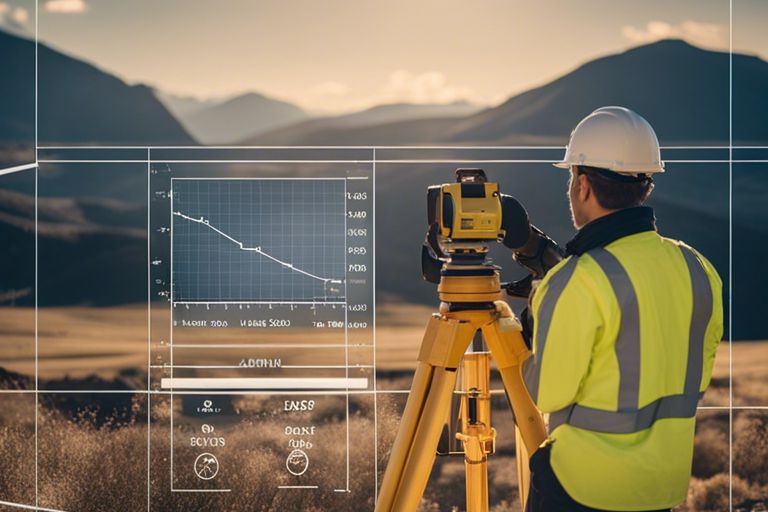Over the years, survey data has become an indispensable tool in determining accurate property boundaries. In this blog post, we will research into the significance of survey data and how it plays a crucial role in defining property boundaries with precision. Understanding the importance of surveys and the data they provide can help property owners navigate legal issues, resolve boundary disputes, and ensure the proper demarcation of their land. Let’s explore the ways in which survey data can ultimately help define property boundaries definitively.
Understanding Survey Data
Types of Survey Data Relevant to Property Boundaries
Understanding the different types of survey data relevant to property boundaries is crucial for accurate boundary definition. Recognizing the distinctions between cadastral surveys, boundary surveys, topographic surveys, construction surveys, and geodetic surveys is vital for determining the specific requirements of a property survey.
| Cadastral Surveys | Boundary Surveys |
|---|---|
| Legal survey of property lines | Locates and defines property lines |
| Used for property registrations | Evidence for legal property boundaries |
| Typically conducted by government authorities | Ensures no encroachments |
| Resolves boundary disputes | |
| Required for land development projects |
- Topographic Surveys: Identifies natural and man-made features
- Construction Surveys: Guides the construction process
- Geodetic Surveys: Establishes precise longitudes and latitudes
Interpreting Survey Data for Boundary Definition
Definition of property boundaries is heavily dependent on interpreting survey data accurately. It involves analyzing survey reports, maps, and legal documents to determine the exact location of boundary lines. The survey data must be meticulously studied to resolve any discrepancies and ensure precise demarcation of property boundaries.
Legal Framework and Standards
Regulatory Bodies and Property Boundary Laws
The Standards set by various regulatory bodies play a crucial role in defining property boundaries. These bodies, such as the Land Registry Office, Surveyor-General’s Office, and local planning departments, enforce laws and regulations that govern how properties are surveyed and boundaries are established. Compliance with these standards ensures accuracy and consistency in defining property boundaries.
Compliance with Local, State, and Federal Standards
Property boundary surveys must adhere to a range of standards at the local, state, and federal levels to ensure legal compliance and accuracy. These standards dictate the methods, instruments, and procedures that must be followed during a survey to guarantee that property boundaries are clearly defined and legally recognized. Professionals conducting surveys must be well-versed in these standards to ensure that property boundaries are accurately determined.
A property boundary survey is a critical step in defining property lines and establishing legal boundaries. It involves a thorough examination of property deeds, historical records, and physical markers to ensure that the boundaries are accurately represented. Compliance with local, state, and federal standards is important to guarantee the accuracy and legality of property boundaries, providing property owners with a clear understanding of their land holdings.
Practical Application of Survey Data
Resolving Boundary Disputes with Survey Data
Boundary disputes can be a common headache for property owners, often leading to legal battles and strained relationships. Survey data plays a vital role in resolving these conflicts by providing clear and precise information on property boundaries. By analyzing survey data, surveyors can accurately define property lines, helping to settle disputes and avoid costly litigation.
Survey Data in Property Development and Planning
Any property development or planning project requires accurate survey data to ensure compliance with zoning regulations and building codes. Survey data aids in determining optimal land use, identifying environmental concerns, and assessing infrastructure needs. By utilizing survey data during the planning phase, developers can streamline the approval process and mitigate potential issues that may arise during construction.
Data collected through surveys provides invaluable insights for various property-related activities, from resolving boundary disputes to informing property development and planning decisions. By leveraging survey data effectively, property owners, developers, and government entities can make informed choices that promote efficient land use and facilitate sustainable development.
Technological Advancements in Surveying
Modern Tools and Techniques in Property Surveying
With the rapid advancements in technology, the field of property surveying has seen a transformation in the tools and techniques used. Traditional methods involving manual land surveys have now been supplemented or replaced by modern technologies such as GPS, drones, LiDAR, and GIS. These tools not only enhance the efficiency of the survey process but also provide more accurate and detailed data for boundary determinations.
Impact of Technology on Survey Data Accuracy and Reliability
One of the most significant impacts of technology on property surveying is the improvement in survey data accuracy and reliability. With the integration of advanced tools like GPS and drones, surveyors can gather precise measurements and high-resolution imagery of the property being surveyed. This leads to more reliable data for defining property boundaries and reduces the margin of error in survey results.
Advancements: The integration of advanced technologies such as GPS (Global Positioning System) has revolutionized the way property boundaries are defined. GPS technology allows surveyors to pinpoint locations with high accuracy, reducing human error and improving the reliability of survey data. Additionally, the use of drones and LiDAR technology offers a bird’s eye view of the land, capturing intricate details that were previously difficult to obtain through traditional methods. These technological advancements have not only made property surveying more efficient but have also raised the standard of accuracy and reliability in boundary determinations.

Summing up
Upon reflecting on how survey data can help define property boundaries, it becomes clear that surveys play a crucial role in establishing property lines with precision and accuracy. By leveraging advanced technology and methodologies, surveyors can provide clear documentation that can bring clarity and resolution to property disputes. Homeowners, real estate developers, and other stakeholders can benefit greatly from conducting thorough surveys to ensure that their property boundaries are accurately defined. Survey data ultimately serves as a reliable and legally binding tool that helps protect property rights and prevent conflicts in the long run.

